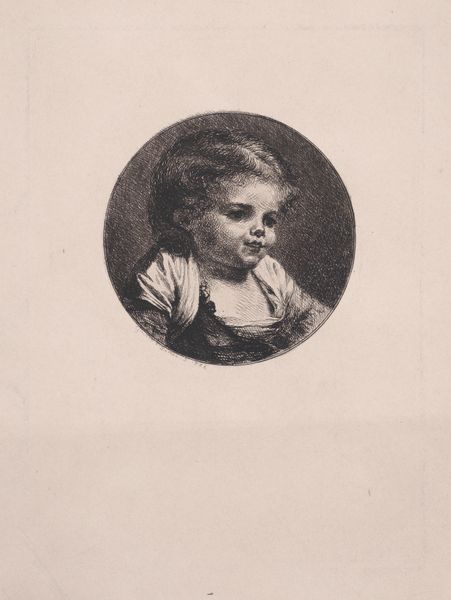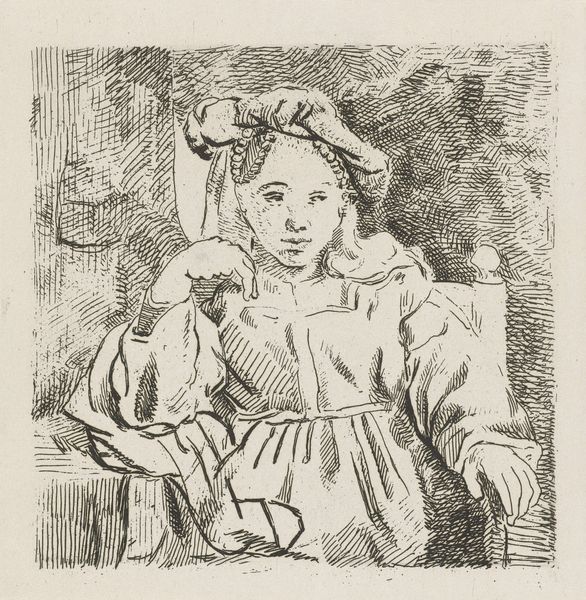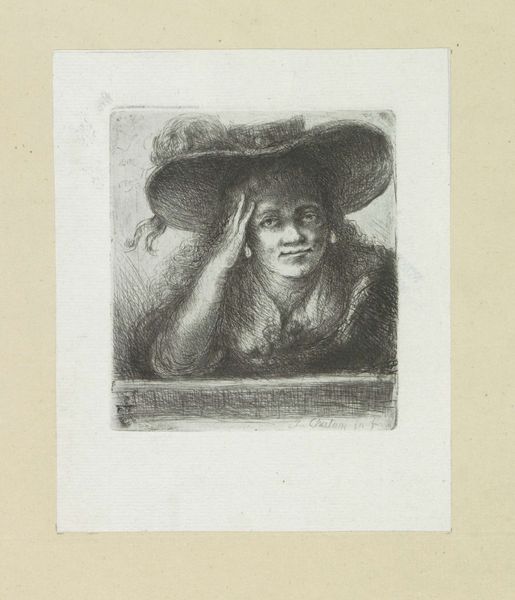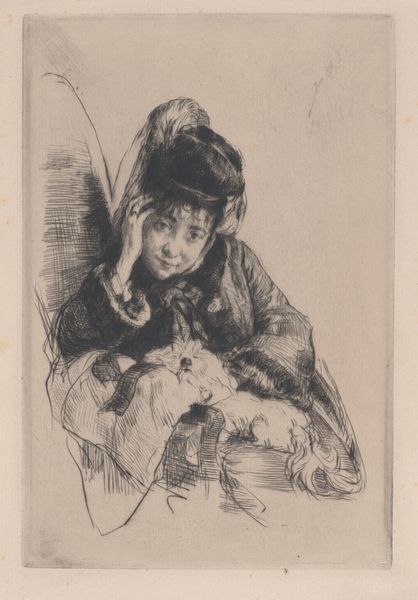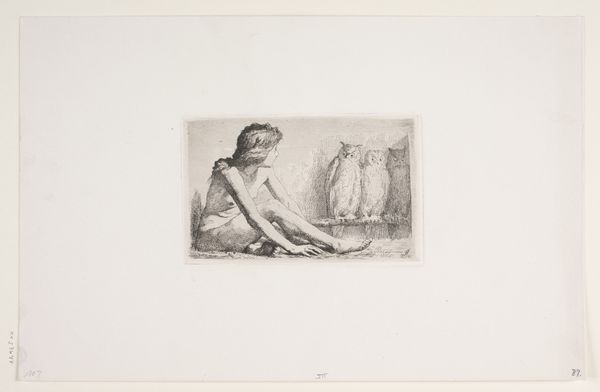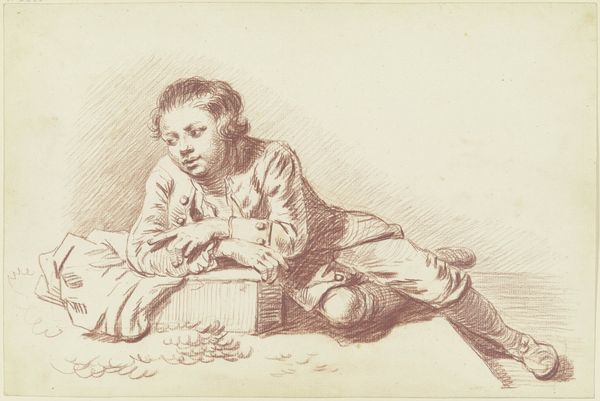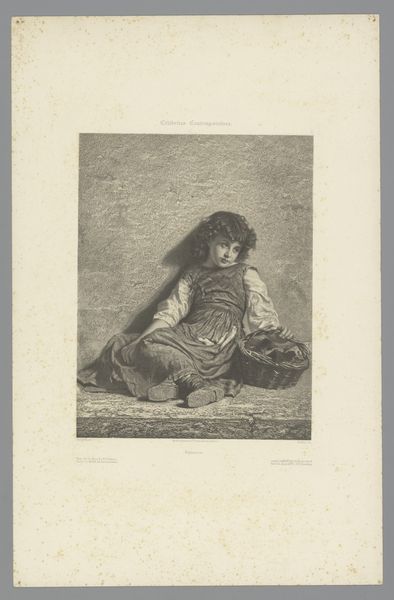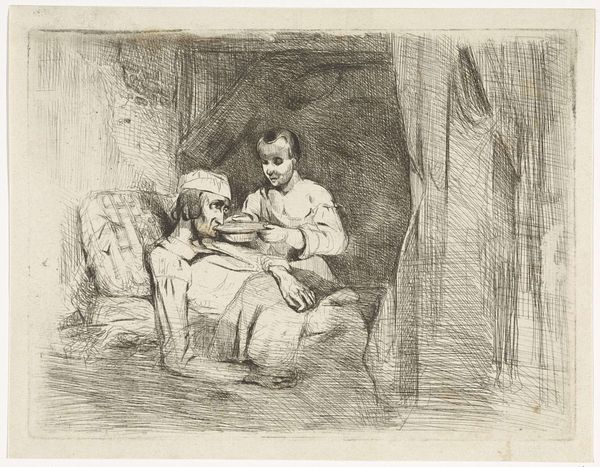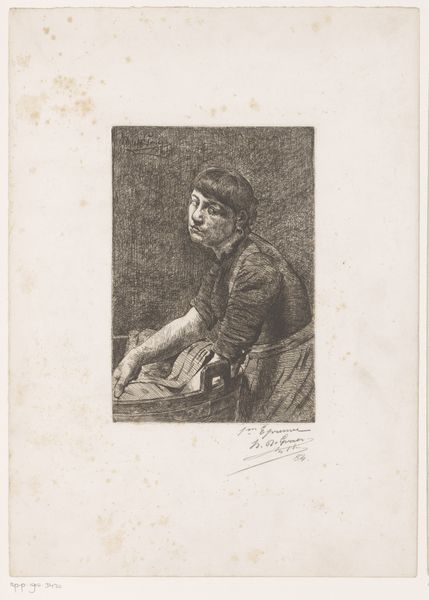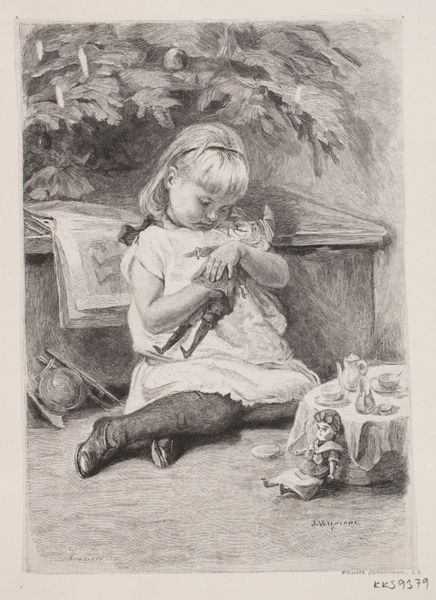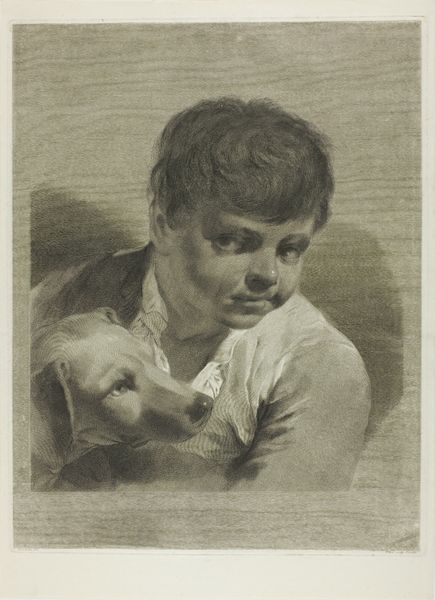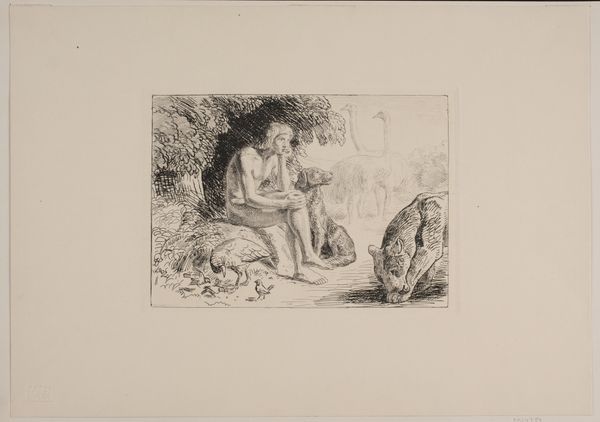
drawing, print, charcoal
#
portrait
#
drawing
# print
#
charcoal drawing
#
charcoal
#
charcoal
#
realism
Dimensions: 80 mm (height) x 110 mm (width) (billedmaal)
Curator: Looking at this captivating print, titled "En bondepige," which translates to "A Peasant Girl," created sometime between 1864 and 1949 by Henrik Arnold Hamilkar Sørensen, you can see it's a charcoal drawing that embodies realism with a portrait style. Editor: My first thought is that the work emanates this melancholic, contemplative aura. The limited tonal range enhances a mood of introspection. The texture of charcoal lends it an interesting grainy tactility as well. Curator: That pensiveness might come from the tradition of social realism that emerged then; art intended to address inequalities. Though labeled "peasant girl" it may be seeking dignity rather than focusing on the hardship expected from representations of the rural poor at the time. Editor: Yes, though her expression seems neutral, there's also an element of defiance, don’t you think? Like she's quietly challenging the viewer. Given the timeframe of the piece, this potentially coincides with movements advocating for marginalized communities and challenges inherent to how society, and therefore art, treats women of lower social status. Curator: Absolutely, it could be argued this is a response, both resisting and reflecting the period’s changing attitudes toward class. The museum acquires and exhibits art that relates to all walks of life—how those images become politicized, idealized, or even rejected, informs the culture broadly. Editor: Exactly, that potential reading interests me. Looking closely, even her clothing feels less "picturesque peasant" and more functional, worn. This contributes to a sense of realism that humanizes the girl beyond her social classification, I believe. It's a fascinating statement about seeing, representing, and, ultimately, valuing. Curator: Thinking about Sørensen and the art world more broadly, there are shifts happening now—greater interest in redressing who is collected and what the art implies beyond formal qualities. The socio-historical background gives a lens for deeper looking and thinking. Editor: It’s crucial that audiences, and scholars, view pieces with the sociopolitical dynamics, as a form of intervention. Viewing them as an invitation, and hopefully tool for continued dialogue, for our shared pursuit to improve society’s framework through history.
Comments
No comments
Be the first to comment and join the conversation on the ultimate creative platform.
